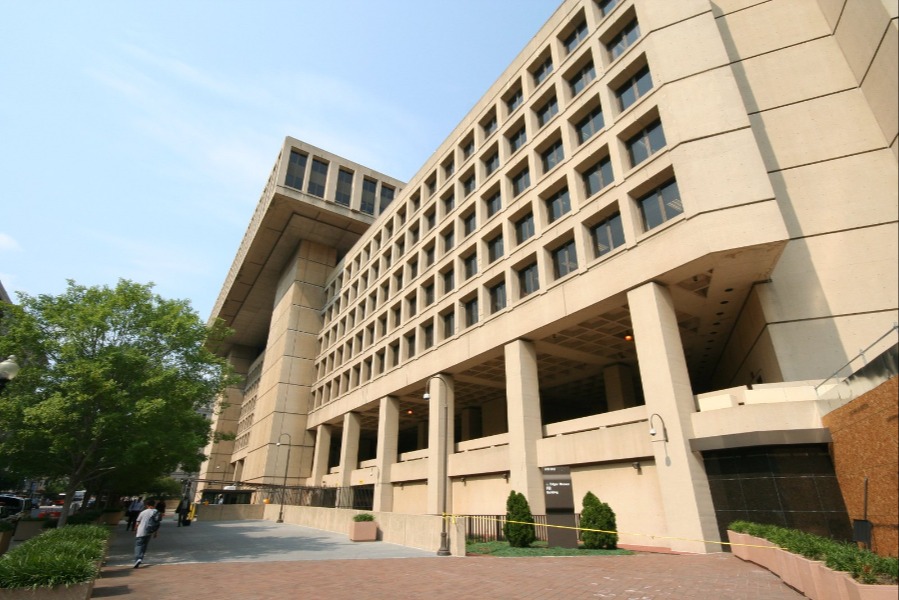Class Actions and Due Process Relief for Immigration Detainees After Jennings v. Rodriguez
A U.S. district court has limited the ability of immigration detainees to use an important procedural tool to challenge their detention. With the ruling, detainees are restricted in their ability to bring a Rule 23(b)(2) class action to assert a right to individualized bond hearings under the Due Process Clause. The order lays bare the consequences of the Supreme Court’s 2018 decision in Jennings v. Rodriguez and foreshadows increased difficulty for detained asylum-seekers hoping to challenge their prolonged imprisonment without bond hearings.

Published by The Lawfare Institute
in Cooperation With

A U.S. district court has limited the ability of immigration detainees to use an important procedural tool to challenge their detention. With the ruling, detainees are restricted in their ability to bring a Rule 23(b)(2) class action to assert a right to individualized bond hearings under the Due Process Clause. The order lays bare the consequences of the Supreme Court’s 2018 decision in Jennings v. Rodriguez and foreshadows increased difficulty for detained asylum-seekers hoping to challenge their prolonged imprisonment without bond hearings.
Two years ago, two petitioners brought a class action lawsuit against the federal government, asking whether detaining asylum-seekers who passed their initial credible fear interview for more than six months without a bond hearing violates the Immigration and Nationality Act or the Due Process Clause of the Fifth Amendment. The petitioners, Hanad Abdi and Johan Barrios Ramos, sued on behalf of themselves and other asylum-seekers detained pursuant to 8 U.S.C. § 1225(b)(l)(B)(ii), a subsection of the federal statute governing the inspection and detention of immigrants who are considered “applicants for admission” to the United States, at the Buffalo Federal Detention Facility. In December 2017, Judge Elizabeth Wolford of the U.S. District Court for the Western District of New York certified a subclass under Rule 23(b)(2) of the Federal Rules of Civil Procedure. The subclass Wolford certified was as follows:
All arriving asylum-seekers who are or will be detained at the Buffalo Federal Detention Facility, have passed a credible fear interview, and have been detained for more than six months without a bond hearing before an immigration judge.
Last month, however, Wolford issued a decision decertifying the subclass, concluding that it no longer met the requirements of Rule 23(b)(2). What changed in the 21 months since her initial ruling? In February 2018, the Supreme Court ruled in Jennings v. Rodriguez. In Jennings, the court held that the Immigration and Nationality Act does not give detained immigrants the right to periodic bond hearings at six-month intervals.
Besides this narrow holding, the court did not address the Jennings respondents’ constitutional due process claims and instead remanded the case to the U.S. Court of Appeals for the Ninth Circuit to consider the due process arguments. However, Justice Samuel Alito, writing for the Supreme Court, advised the Ninth Circuit to first assess whether a Rule 23(b)(2) class action is an appropriate mechanism to resolve the respondents’ due process claims before the circuit court makes any decision about the merits of the respondents’ constitutional claims. While these issues remain open in the Jennings remand, Wolford most recently ruled that the subclass is no longer appropriate because Jennings invalidated the statutory six-month rule that held the subclass together. This post examines Wolford’s decision to decertify the subclass and the implications of her ruling for detained immigrants seeking to use the class device to assert due process rights.
Many cases in which detained immigrants challenge their prolonged incarceration, like Jennings and Abdi, are class actions. A class action is a type of lawsuit brought by one or more plaintiffs on behalf of a larger group of similarly situated individuals or parties. Rule 23(a) sets out four requirements that must be met in order for a person or party to establish a class action: “(1) the class is so numerous that joinder of all members is impracticable; (2) there are questions of law or fact common to the class; (3) the claims or defenses of the representative parties are typical of the claims or defenses of the class; and (4) the representative parties will fairly and adequately protect the interests of the class.”
In addition to satisfying these four conditions, the suit must be one of the four types of class actions specified in Rule 23(b). Rule 23(b)(2) allows for a class action where “the party opposing the class has acted or refused to act on grounds that apply generally to the class, so that final injunctive relief or corresponding declaratory relief is appropriate respecting the class as a whole.” Many Rule 23(b)(2) class actions have historically been and continue to be cases concerning civil and constitutional rights where plaintiffs seek injunctive or declaratory relief for the entire class.
In the Jennings case, Alejandro Rodriguez, a Mexican citizen and lawful permanent resident in the United States, represented a class certified under Rule 23(b)(2). The class comprised immigrants detained for more than six months without a bond hearing and was divided into subclasses for each of the four provisions of the immigration statute pursuant to which they were held. Rodriguez and the other named plaintiffs argued that they and the other class members had statutory and constitutional rights to periodic individualized bond hearings, and they sought declaratory and injunctive relief to that effect. The Ninth Circuit affirmed the district court’s grant of a permanent injunction and held that the immigration statute provisions implicitly required periodic bond hearings at six-month intervals. After the Ninth Circuit ruling, the government applied to the Supreme Court for certiorari.
As Andrew Patterson noted previously in Lawfare, the Supreme Court held that the Ninth Circuit misapplied the doctrine of constitutional avoidance in interpreting the immigration statute to require periodic bond hearings. Although the text of the statute did not state that periodic bond hearings for detainees are required, the Ninth Circuit discerned that prolonged detention without a bond hearing would raise due process concerns and so it invoked the doctrine of constitutional avoidance to read the statutory provisions as implicitly requiring a bond hearing every six months. Courts apply the doctrine of constitutional avoidance to avoid striking down statutes where there’s a plausible interpretation of the statute that doesn’t present constitutional concerns. The Supreme Court saw the Ninth Circuit’s application of constitutional avoidance as incorrect because there was no textual support for the Ninth Circuit’s interpretations, making the interpretations implausible. Because the Ninth Circuit resolved the class claims on statutory and not constitutional grounds in their initial ruling, which the Supreme Court ruled was erroneous, the court remanded the case to the Ninth Circuit to consider the due process arguments.
However, as mentioned above, Justice Alito instructed the Ninth Circuit to address certain procedural issues before adjudicating the constitutional claims. First, Alito wrote that the Ninth Circuit should assess whether it continues to have jurisdiction to issue classwide injunctive relief under 8 U.S.C. § 1252(f)(1), which doesn’t allow courts, other than the Supreme Court, to have jurisdiction to “enjoin or restrain the operation” of §§ 1221-1232 except with respect to an individual immigrant, prohibiting federal courts from issuing classwide injunctions. The Ninth Circuit originally held that § 1252(f)(1) did not bar classwide injunctive relief in this case because the detainees were seeking to enjoin conduct that wasn’t authorized by the statute, rather than enjoining conduct that was authorized pursuant to “the operation” of the statutes, but Alito noted this reasoning may not apply for the constitutional claim. Alito advised the circuit court to consider if the class can be sustained for declaratory relief alone, if the court finds it does not have jurisdiction to issue classwide injunctive relief. Because Rule 23(b)(2) permits “final injunctive relief or corresponding declaratory relief,” the court may still have jurisdiction to issue a declaratory judgment—for example, that detention for six months or more without periodic bond hearings is unconstitutional—notwithstanding § 1252(f)(1).
Second, and more relevant here, Alito wrote that the court should “consider whether a Rule 23(b)(2) class action continues to be the appropriate vehicle for respondents’ claims.” Alito offered two reasons to reevaluate whether a Rule 23(b)(2) class is still appropriate. First, because the Ninth Circuit already recognized that some class members in this case may not have a constitutional right to bond hearings, the class may no longer satisfy the Supreme Court’s standard articulated in Wal-Mart Stores, Inc. v. Dukes, 564 U.S. 338, 360 (2011), that “Rule 23(b)(2) applies only when a single injunction or declaratory judgment would provide relief to each member of the class.” Second, because the Supreme Court has described the Due Process Clause as “flexible” and based on each particular situation, a Rule 23(b)(2) class litigated on common facts may not be the appropriate vehicle to resolve the respondents’ due process claims.
Putting aside the instructions above for a moment, as a reminder, the narrow holding of Jennings was that the immigration statute provisions, including § 1225(b), do not require periodic bond hearings at six-month intervals. In the Abdi case, the original basis for certifying the subclass was the same justification that Jennings eliminated: that § 1225(b) requires bond hearings after six months in immigration detention. What impact did invalidating the statutory six-month rule have? Almost eight months after the Jennings decision, the government filed a motion in Abdi to vacate Wolford’s prior grant of a preliminary injunction, and a few months later, it filed a motion to decertify the subclass. The government’s arguments for decertifying the subclass resonated strongly with Alito’s points: Because Jennings eliminated the statutory basis for certifying the subclass, and because the subclass’s due process claims require individualized consideration and are thus incapable of uniform resolution as Rule 23 requires, the subclass should be decertified. The petitioners in this case did not dispute that Jennings invalidated the statutory basis for the injunction and subclass certification. As a result, the central question for Wolford was this: Without the statutory six-month bright-line rule—the glue that held the subclass together—is the subclass still appropriate to adjudicate the constitutional due process claim?
In considering this issue, Wolford did not decide if the individual subclass members in this case have due process rights to bond hearings after six months in detention. Instead, she focused on the narrower question of whether the “flexible notions of due process categorically require a bond hearing after the passage of six months’ time.” To Wolford, the answer was no because, based on her analysis, deciding whether an individual detained pursuant to § 1225(b) is entitled to a bond hearing under the Due Process Clause “is necessarily a fact-specific and individualized determination.” It was this determination that led Wolford to decertify the subclass, but what informed her determination in the first place?
Wolford’s analysis focused on two points: first, that Jennings eliminated the subclass glue, the statutory six-month bright-line rule; and second, that in the absence of the six-month rule, the flexibility inherent to the due process inquiry prevents classwide injunctive or declaratory relief in this case. When this subclass was initially certified, Wolford rejected the government’s argument that it was necessary to consider each subclass member’s individual circumstances to determine if the individual was entitled to a bond hearing. In part, Wolford made this decision because, in the pre-Jennings world, the government was statutorily obligated to provide a bond hearing after six months in detention. The shared characteristic that all subclass members were detained for at least six months was the “linchpin” to Wolford’s initial conclusion that each subclass member could be entitled to an individualized bond hearing, justifying the injunction and the subclass certification. However, as we know, Jennings eliminated the statutory basis for the temporal justification. The thrust of Wolford’s decision, thus, was why she did not find that there was a constitutional basis for the six-month rule.
To determine the constitutional issue, Wolford assessed how other courts post-Jennings have decided whether the length of immigration detention is unreasonable or unjustified as a matter of due process. Because the Second Circuit hasn’t yet established a standard, Wolford looked to other district courts in the circuit and found that they have adopted a case-by-case approach and a multifactor test. A year earlier, Judge John Koeltl of the Southern District of New York summarized seven factors the court considered in the context of 8 U.S.C. § 1226(c), which governs the detention of criminal immigrants, including “the party responsible for the delay” and “whether the detention facility is meaningfully different from a penal institution for criminal detention.” Other district courts have also applied the multifactor test in the § 1225(b) context and produced mixed outcomes, with some finding that due process requires an individualized hearing and others finding that it doesn’t. Moreover, Alito’s invocation of the standard articulated in Dukes—that the Rule 23(b)(2) class is appropriate when a single injunctive or declaratory remedy can be applied “only as to all of the class members or as to none of them” (quoting a law review article)—and emphasis on the flexibility of due process bolstered Wolford’s conviction that “a bright-line rule would constrict the flexibility inherent to a due process inquiry and is inconsistent with the Supreme Court's teachings in Jennings.” These analyses led Wolford to conclude that even if a majority of the subclass members would be entitled to a bond hearing based on the individualized due process inquiry, in the absence of a bright-line temporal rule that has statutory or constitutional support, there’s no categorical, classwide entitlement to bond hearings. So, the subclass can’t stand.
Before Wolford reached her decision, in opposition to the government’s motions to vacate the preliminary injunction and decertify the subclass, Abdi and Ramos unsuccessfully attempted to salvage the subclass. To argue that a six-month bright-line rule for immigration detention is required under due process, Abdi and Ramos analogized to bright-line temporal rules in other detention contexts like the criminal context, but Wolford was not ultimately convinced by such efforts given the “materially different context of immigration detention.” As a result, and as noted above, Wolford concluded that a single injunction could not apply to the subclass. In the alternative, Abdi and Ramos encouraged Wolford to issue a declaratory judgment that “continued mandatory immigration detention for six months or more is unconstitutional as applied to each subclass member.” Wolford dismissed this point because declaratory judgment would require the same thing as the injunction: It would be necessary to find that the Due Process Clause categorically requires a bond hearing after six months, which Wolford ruled it does not.
The petitioners also urged the court to follow the approach the U.S. District Court for the District of Massachusetts took in Reid v. Donelan, a post-Jennings decision. In that case, the court denied the motion to decertify the class of immigrants detained under § 1226(c), determining that “the class still presents the common threshold question of whether their detention after six months without a bail hearing or reasonableness review violates the Constitution.” However, Wolford was unpersuaded by petitioners’ invocation of the Reid ruling because, in her view, the petitioners’ arguments did not address Jennings’s invalidation of the six-month bright-line rule. In fact, in a subsequent decision in the Reid case, the court there also denied plaintiffs’ requests for a classwide injunction ordering bond or reasonableness hearings or a declaratory judgment that due process requires automatic bond or reasonableness hearings after more than six months in detention on the basis that due process requires consideration of individual circumstances. Essentially, Wolford’s decision came out of the conclusion that the petitioners’ arguments didn’t reach the core of her analysis: Without a viable bright-line temporal rule, individual circumstances can require a bond hearing for some subclass members and not for others even if they are all detained for the same length of time. As a result, a single injunction or declaratory judgment can’t be issued, failing Rule 23(b)(2).
Yet, by decertifying the subclass, the court didn’t close other doors available to subclass members. The district court’s actual holding, not unlike Jennings, is narrow: It “merely holds that the Fifth Amendment’s Due Process Clause does not categorically require that bond hearings take place after six months of immigration detention, and that without this pre-Jennings temporal limitation, the subclass must be decertified pursuant to Rule 23(b)(2) and Dukes.” The plaintiffs can, for example, amend their pleadings and pursue a new class definition, as other courts have allowed in light of Jennings. However, the court’s emphasis on the flexibility and individualized nature of due process presents a challenge for detainees like Abdi and Ramos: Is it possible to craft a class definition that allows categorical application in a due process inquiry?
One potential avenue echoes the plaintiffs’ and the court’s approach in Reid, where the court did grant a classwide declaratory judgment that “mandatory detention without a bond hearing under 8 U.S.C. § 1226(c) violates due process when the detention becomes unreasonably prolonged in relation to its purpose in ensuring the removal of deportable criminal aliens.” The court also stated that length is the most important factor in judging reasonableness, and that mandatory detention for over a year without a bond hearing is likely to be unreasonable. This declaratory judgment, however, is different from the declaratory relief the Abdi petitioners sought because it does not announce that detainees have a due process right to a bond hearing after six months in detention. Under the Reid declaratory judgment, detainees must still bring an individual habeas petition to challenge their detention and seek a bond hearing. Because this approach is focused on the type of relief sought, rather than the class definition, the Abdi petitioners would not necessarily need to redefine the subclass to pursue the declaratory judgment in Reid. However, this approach still would not help the Abdi subclass members achieve classwide relief on the question of whether they are entitled to a bond hearing––they would still have to do what they were trying to avoid by using the class device in the first place, litigating individually for the right to a bond hearing.
The other option, pursuing a new class definition, will be especially challenging, as I mentioned earlier, because Wolford’s answer to the subclass’s question––does due process require a bond hearing after six months in immigration detention––is that, under due process, it depends on each subclass member’s individual circumstances. For the Abdi lawyers to redefine the subclass to satisfy Wolford’s analysis, they would need to formulate a bright-line rule pertaining to the right to a bond hearing that they can show is required under the Due Process Clause—a rule that could serve as new glue to hold the subclass together. However, Wolford’s answer that “the fact-specific circumstances of each alien will dictate whether each is or is not entitled to a bond hearing” appears antithetical to a possibility of establishing another categorically unifying bright-line rule.
If the Abdi lawyers were to redefine the class tomorrow, for example, as all asylum-seekers detained at the Buffalo Federal Detention Facility for more than a year without a bond hearing due to delays at no fault of their own, they would encounter the same obstacle: They would need to show that due process requires a bond hearing after a year when the delays were at no fault of the detainees to maintain the class. This presents a significant challenge because Wolford’s analysis highlights that, in light of Jennings, Dukes, and post-Jennings decisions, due process requires consideration of various individualized circumstances and so the class would fail Rule 23(b)(2). Thus, although Wolford’s precise ruling is narrow, the premises of her conclusion make it hard to imagine an adequate class definition, at least in the context of pursuing a due process right to a bond hearing, in the post-Jennings world.
One of the advantages of the Rule 23(b)(2) class action, and why it is especially useful in cases like Jennings and Abdi, is that it allows plaintiffs to challenge conduct on the large-scale level at which it is occurring. Although plaintiffs can always bring individual suits, they risk their cases becoming moot before they are resolved, something class certification sometimes provides an exception for. The class device also carries a financial advantage: It saves lawyers and public interest groups time and resources, encouraging them to litigate on behalf of indigent immigrant detainees. Abdi represents a limitation on the availability of this useful, efficient and common tool to detained immigrants seeking release. While we do not yet know the long-term impact of Jennings on how expansive this limitation will be, Abdi hints that the fate of Rule 23(b)(2) class actions for detained immigrants pursuing due process relief is in trouble. Given the multifactor approach that courts have endorsed, it’s difficult to imagine any bright-line rule being sufficient to hold together future classes of immigration detainees pursuing due process rights to a bond hearing. Abdi signals movement in a still-developing trend post-Jennings on the availability of the Rule 23(b)(2) class device and ultimately on the ability of detained immigrants to challenge prolonged incarceration.





